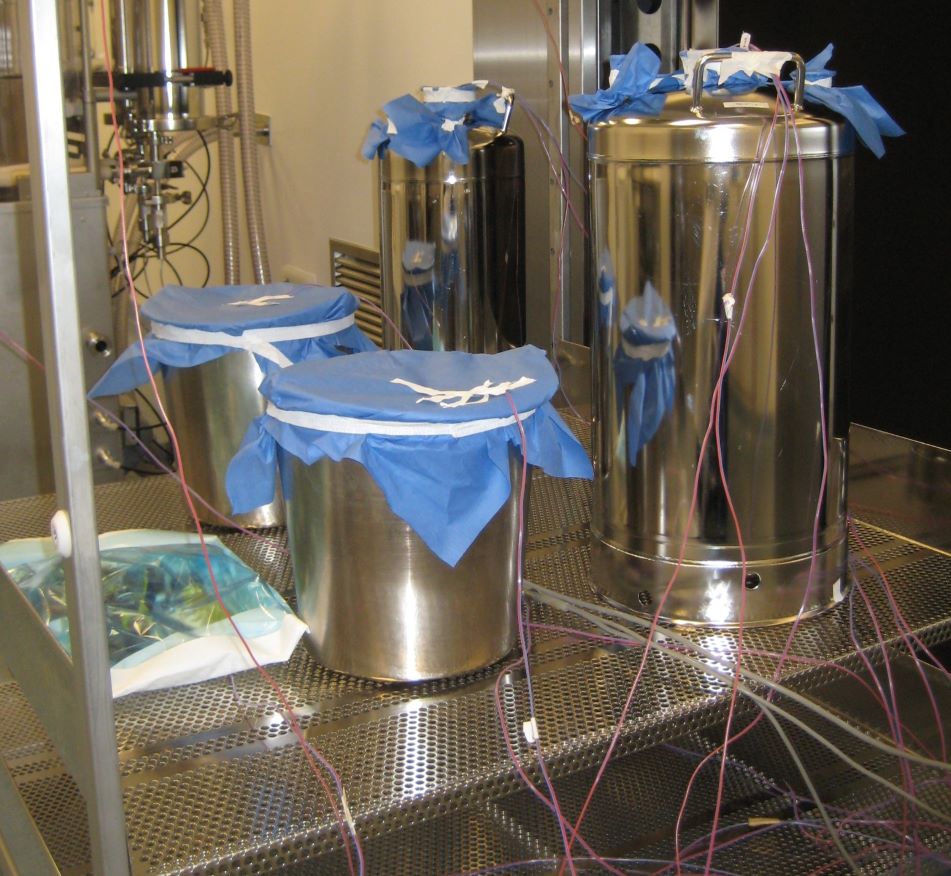Steam and Dry Heat Sterilization Qualification
The qualification of heat sterilization, such as steam sterilization or dry heat sterilization, is an important process in the pharmaceutical industry to ensure the effectiveness and reliability of the sterilization method.

-
Installation Qualification (IQ): Perform the installation qualification to ensure that the sterilization equipment is installed correctly and in accordance with the manufacturer's instructions. This involves verifying the proper installation of components, connections, and utilities, as well as documenting the equipment setup.
-
Operational Qualification (OQ): Conduct operational qualification tests to demonstrate that the heat sterilization process performs as intended. This includes verifying the accuracy and reliability of temperature and pressure controls, validating the sterilization time and cycles, and assessing the equipment's performance under different operating conditions.
-
Performance Qualification (PQ): Perform performance qualification tests to evaluate the effectiveness of heat sterilization in achieving the desired microbial reduction. This involves using biological indicators (e.g., spore strips or vials) to challenge the sterilization process and validate its efficacy. The biological indicators are placed at various locations within the sterilization chamber to ensure representative results.
-
Validation Report: Compile the results and documentation from the qualification process into a comprehensive validation report. This report should include all the protocols, test data, observations, and conclusions drawn from the qualification studies.
In the context of heat sterilization, the lethality rate F0 and log reductions are measures used to evaluate the effectiveness of the sterilization process in reducing microbial populations. The Z value is a critical parameter in the calculation of these values. Here's an explanation of each term:
-
Lethality Rate (F0): The lethality rate, represented as F0, is a measure of the cumulative lethal effect of heat on microorganisms during a sterilization process. It indicates the time required to achieve a specific microbial reduction, typically expressed as a 12-log reduction (i.e., 1 in 1012 survivors). The F0 value takes into account both the temperature and time parameters of the sterilization process.
-
Log Reduction: The log reduction represents the extent to which the microbial population is reduced through the sterilization process. It is calculated by determining the difference in the logarithmic scale between the initial microbial population and the remaining population after the sterilization process. For example, a 3-log reduction indicates a reduction of 1,000-fold in the microbial population.
-
Z Value: The Z value, also known as the thermal resistance coefficient, is a parameter that describes the sensitivity of microorganisms to changes in temperature. It represents the change in temperature required to cause a tenfold change in the D value, which is the time required to achieve a 1-log reduction in the microbial population. The Z value is specific to the microorganism or class of microorganisms being targeted by the sterilization process.
To calculate the lethality rate F0, the Z value is used in conjunction with the temperature and time parameters of the sterilization process. The formula for calculating F0 is:
F0 = (t-t0) x 10(T - 121.1°C)/z
Where:
- F0 is the lethality value in minutes at 121.1°C.
- t is the sterilization time in minutes.
- t0 is the reference time, usually set at 3 minutes.
- T is the actual temperature of the sterilization process in degrees Celsius.
- z is the Z-value, which represents the temperature change required to achieve a tenfold change in the microbial death rate. The Z-value is specific to the microorganism of concern.
The calculated F0value indicates the cumulative lethal effect of heat at the given temperature and time, and it is used to assess the effectiveness of the sterilization process in achieving the desired microbial reduction.
For dry heat sterilization, the Z value can vary depending on the organism or organism class being targeted. Some general estimates for the Z value in dry heat sterilization range from around 10 to 20°C (18 to 36°F) for bacterial spores. However, it's important to note that these values can vary significantly depending on the specific microorganism and the experimental conditions.
For moist heat sterilization, such as steam sterilization (autoclaving), the commonly accepted Z value for most bacterial spores is around 10°C (18°F). However, it's worth mentioning that the Z value can still vary depending on the specific microorganism or organism class.